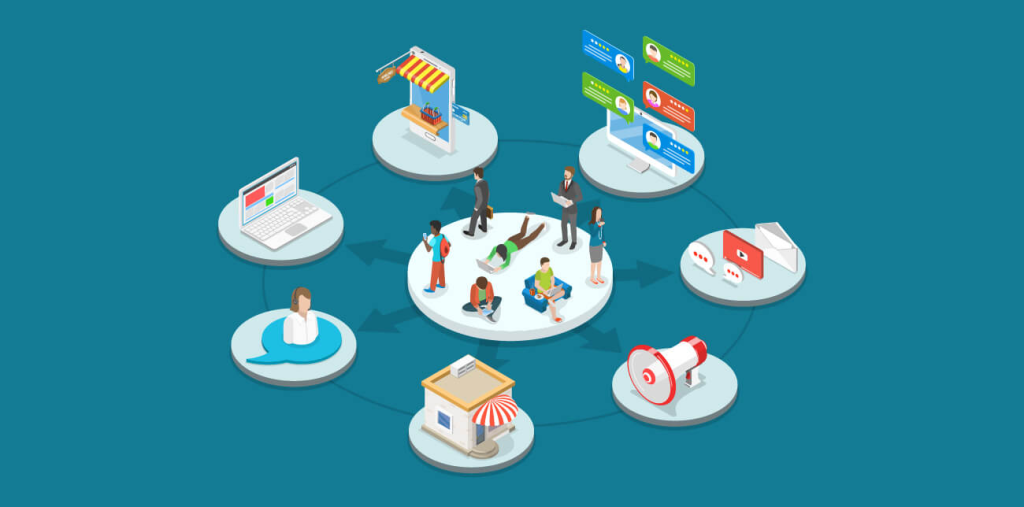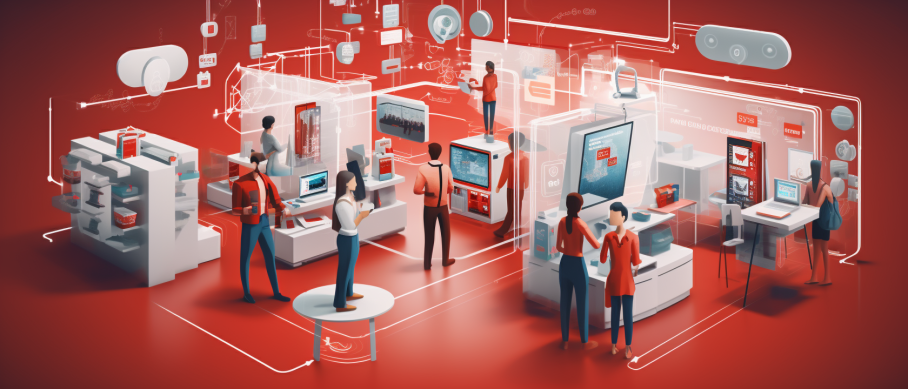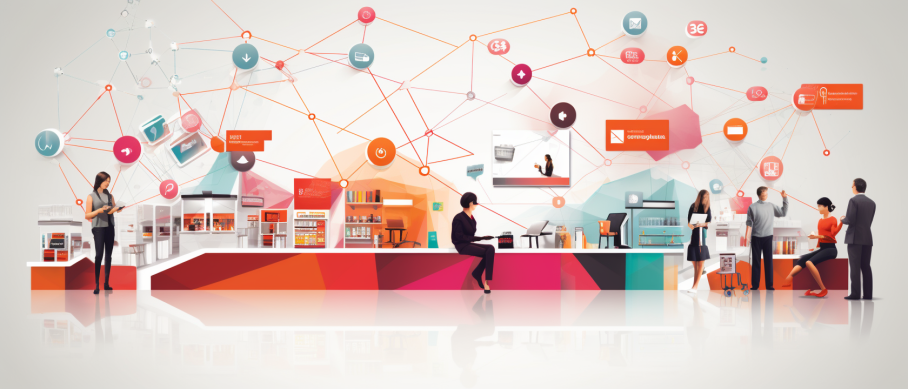In the constantly evolving world of retail, omni-channel retail has emerged as a revolutionary concept. It’s not just a passing trend but a significant shift that is shaping the future of shopping. Let’s take a closer look at what omni-channel retail is and why it’s becoming so crucial.

I. Understanding Omnichannel Retail
A. What Is Omnichannel Retail?
- Seamless Integration of Channels
Omnichannel retail means integrating different shopping channels seamlessly. This includes online stores, physical stores, mobile apps, social media platforms, and more. For example, a customer can start browsing products on their mobile app, add items to the cart, and then complete the purchase either online or in a physical store. The experience should be smooth and consistent across all these channels. - Customer – Centric Approach
It’s a customer – centric strategy. Instead of focusing on individual channels, it aims to provide a unified shopping experience based on the customer’s preferences. For instance, if a customer prefers to receive product updates via email, the retail system should be able to accommodate that while also being ready to serve them through other channels if their preference changes.
B. The Difference from Multichannel Retail
- Isolated vs. Integrated Channels
Multichannel retail involves using multiple channels to sell products, but these channels often operate independently. In contrast, omnichannel retail ensures that all channels are interconnected. For example, in multichannel retail, the inventory in a physical store might not be updated in real – time on the online store. But in omnichannel retail, inventory levels are synced across all channels, so customers always get accurate information. - Fragmented vs. Unified Experience
Multichannel retail can sometimes result in a fragmented experience for customers. They might have to repeat information or go through different processes on each channel. Omnichannel retail, on the other hand, provides a unified experience. A customer can start a return process online and then drop off the item at a physical store without any hassle.
II. The Benefits of Omnichannel Retail
A. Enhanced Customer Experience
- Convenience and Flexibility
Omnichannel retail offers customers convenience and flexibility. They can shop whenever and wherever they want. For example, a busy professional can browse products on their lunch break using a mobile app, and then pick up the item from a nearby store after work. This flexibility caters to different lifestyles and preferences. - Personalized Shopping
It enables personalized shopping experiences. By collecting data from various channels, retailers can understand their customers better. For instance, if a customer has a history of buying running shoes, the retailer can send personalized recommendations for new running gear, whether it’s through an email, a notification on the app, or in – store displays.

B. Increased Sales and Revenue
- Cross – Channel Purchases
Omnichannel retail encourages cross – channel purchases. Customers might start with researching a product online and then make the purchase in – store. Or they might buy something in – store and then purchase related items online later. This cross – channel behavior can lead to an increase in the average order value. For example, a customer who buys a camera in a physical store might be more likely to purchase camera accessories online. - Expanded Customer Reach
It also helps retailers expand their customer reach. By being present on multiple channels, they can attract customers who prefer different shopping methods. For example, a younger demographic might be more active on social media platforms, while an older demographic might still prefer shopping in physical stores. Omnichannel retail allows retailers to target both groups effectively.
C. Improved Operational Efficiency
- Inventory Management
Omnichannel retail streamlines inventory management. With real – time synchronization of inventory across all channels, retailers can avoid overstocking or understocking. For example, if a product is running low in a physical store, the system can automatically adjust the online inventory levels and suggest restocking. This reduces costs associated with inventory management. - Data – Driven Decision Making
It provides valuable data from multiple channels. Retailers can analyze this data to make informed decisions. For instance, they can see which channels are driving the most sales, which products are popular across different channels, and what the customer journey looks like. This data – driven approach helps in optimizing marketing strategies and improving overall business performance.
III. Implementing Omnichannel Retail
A. Technology and Infrastructure
- Integrated Systems
To implement omnichannel retail, retailers need integrated systems. This includes integrating their point – of – sale systems, inventory management systems, customer relationship management (CRM) systems, and more. For example, when a customer makes a purchase in a physical store, the CRM system should be updated in real – time to reflect the purchase history and preferences. - Mobile – Friendly Platforms
With the increasing use of mobile devices for shopping, having mobile – friendly platforms is essential. Retailers need to ensure that their websites and apps are easy to use on smartphones and tablets. This includes features like easy navigation, fast loading times, and secure payment options.
B. Staff Training and Culture
- Multi – Channel Competence
Retail staff need to be trained to handle multiple channels. They should be able to assist customers whether they are shopping online, in – store, or through other channels. For example, a store associate should be able to help a customer who has questions about an item they saw on the website and is now in the store to see it in person. - Customer – Centric Culture
Creating a customer – centric culture within the organization is crucial. All employees should be focused on providing a seamless experience for customers. This means that everyone, from the marketing team to the customer service representatives, should work together to meet the customer’s needs across all channels.
C. Measuring and Optimizing Performance
- Key Performance Indicators (KPIs)
Retailers need to define and track relevant KPIs. These can include metrics like customer satisfaction across different channels, the percentage of cross – channel purchases, and inventory turnover rates. By regularly monitoring these KPIs, retailers can identify areas for improvement. - Continuous Improvement
Based on the data collected from KPIs, retailers should continuously optimize their omnichannel strategies. This might involve making changes to their marketing campaigns, improving the user experience on their platforms, or adjusting their inventory management processes.

In conclusion, omnichannel retail is indeed the future of shopping. It offers numerous benefits for both customers and retailers. By understanding what it is, leveraging its benefits, and implementing it effectively, retailers can stay competitive in the ever – changing retail landscape. As technology continues to advance and customer expectations evolve, omnichannel retail will only become more important in the years to come.




